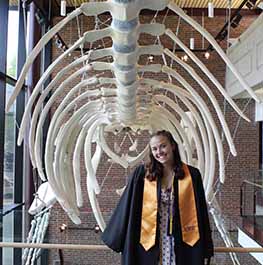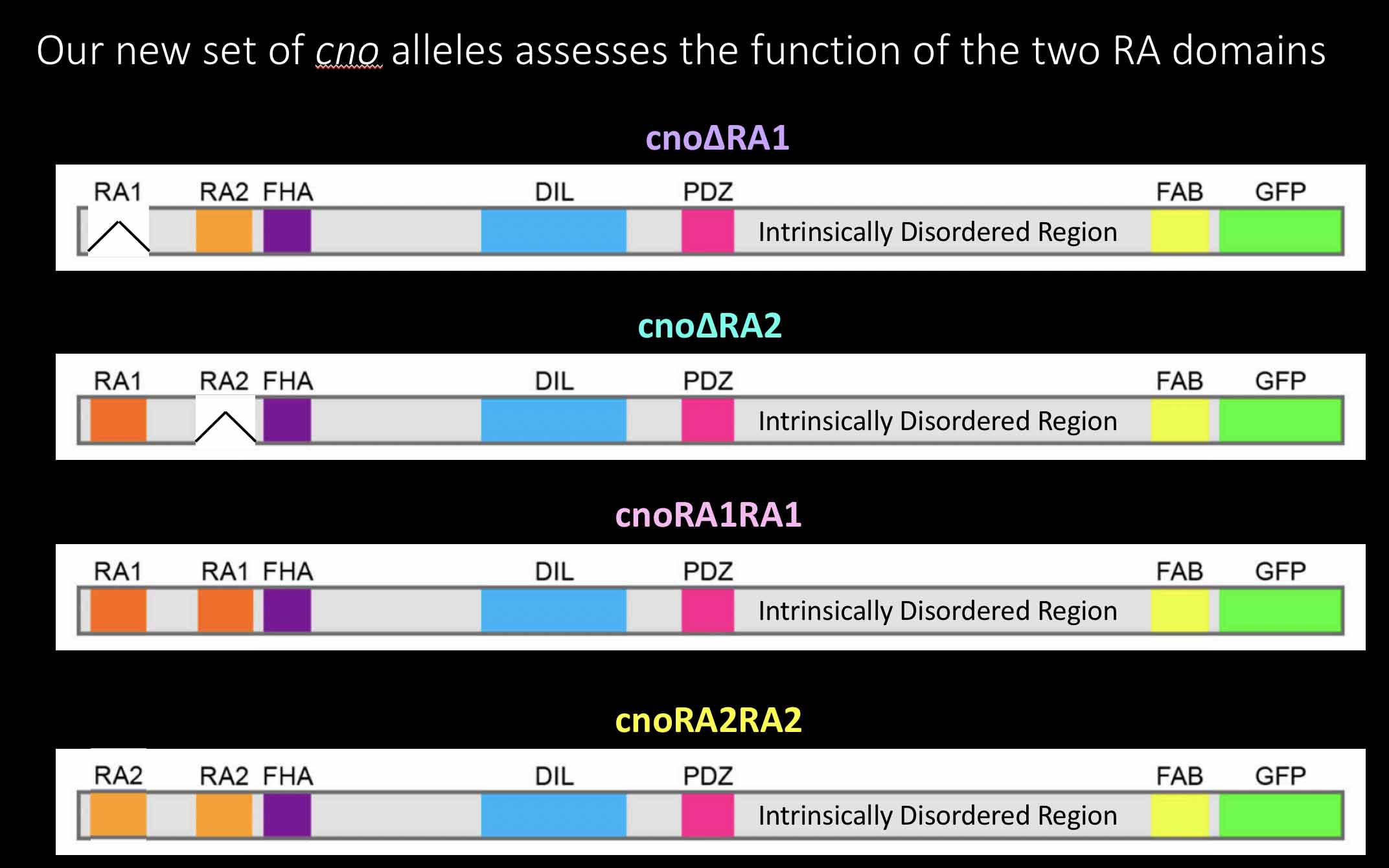Emily McParland
Background & Contact Information
Postbac Researcher (2022 – Present)
Education: B.S Biology Knox College 2022
Email: emmcp@unc.edu
Research Information
Before joining the Peifer Lab, I was trained as a mammal jaw biomechanist where I studied chewing kinematics from an evolutionary perspective and from a clinical research angle. After graduation, I wanted to explore a different set of scientific questions and technological approaches, so I joined the Peifer Lab. Here I am exploring how cell-cell adhesive junctions connect to the actomyosin cytoskeleton, allowing cells to change shape and move. This connection must be both robust and yet also dynamic, allowing dramatic events like gastrulation to occur without disrupting tissues. My focus is on the multidomain cell-junction-to-cytoskeleton linker protein Canoe (Cno; mammalian homolog Afadin). We seek to define its mechanism of action, and are using CRISPR/Cas9 engineering to delete and thus test of the function of different evolutionary conserved domains of the Cno protein (Perez-Vale et al., 2021). My focus has been on how Canoe is regulated by its upstream activator: the small GTPase Rap1. Cno has two different RA domains, each of which should independently bind Rap1. Our lab’s previous work confirmed that deleting both RA domains dramatically reduced protein function, but we do not know whether the two RA domains are both required, and why two have been evolutionarily conserved. Amber Butcher, a previous post-bac in the lab, generated a new set of alleles, deleting RA1 or RA2 individually, and also generated mutants with RA1 RA1 or RA2 RA2 configurations. I am examining the function of each of these mutants, assessing zygotic viability, and then the effect of maternal and zygotic mutants. I use the larval cuticle as a readout of major morphogenetic movements. I then use immunofluorescence and confocal microscopy to observe protein localization in the epidermis and structural defects that arise. Our structural biology colleagues in the Slep lab are using biochemical tools to assess Rap1 binding to the two RA domains. Together we hope these approaches will help us define the mechanisms by which Canoe function is regulated by Rap1.
Publications
McParland, E.D.*, Butcher, T.A.*, Gurley, N.J., Johnson, R.I., Slep, K.C., and Peifer, M. (2024) Canoe’s Dilute domain is not essential for linking cell junctions to the cytoskeleton but supports morphogenesis robustness. Journal of Cell Science, in press. *=co-first authors.




